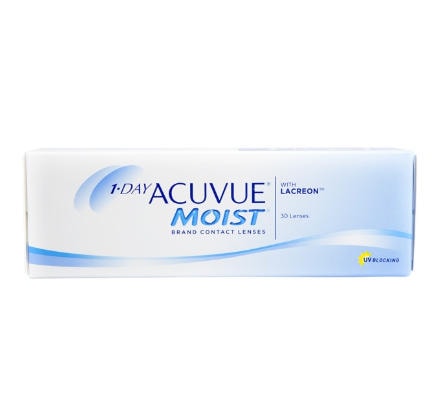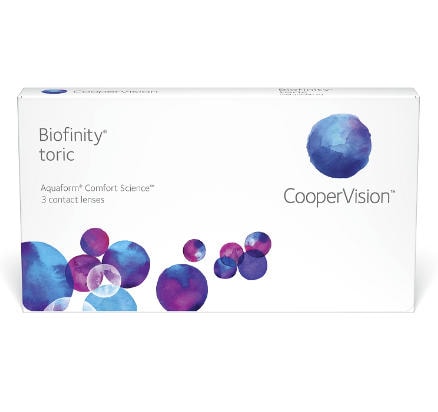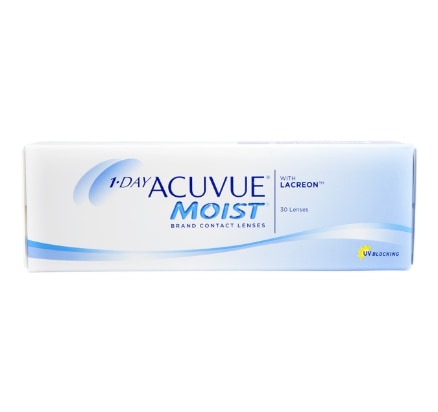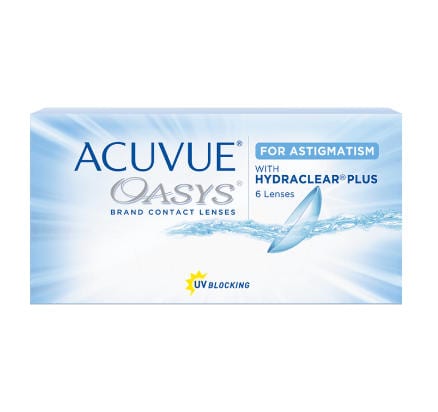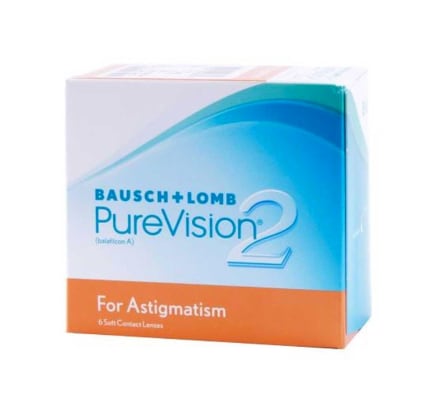Description
1-DAY ACUVUE® MOIST for ASTIGMATISM lenses combine two unique technologies in a daily disposable contact lens for astigmatism: Eyelid Stabilised Design for clear and stable vision all day1,2 and DUAL-ACTION LACREON that helps keep moisture in and irritation out3-8. Built with EYE-INSPIRED™ Design, ACUVUE® MOIST for ASTIGMATISM Contact Lenses offer more than just vision correction.
CLEAR, STABLE VISION FOR ASTIGMATS
The unique Eyelid Stabilised Design technology in 1-DAY ACUVUE® MOIST for ASTIGMATISM delivers clear and stable vision regardless of head or eye movement1,2
STABILISES in 60 seconds9
93% FIRST-FIT success10
WIDE COVERAGE
94% of patients can be accommodated with a wide range of parameters11
MOISTURE IN
Unique LACREON® technology creates a cushion of moisture that lasts all day12.13.14
IRRITATION OUT†
Unique flexible material that fits comfortably to your patients’ eyes15
Keeps lysozyme in its natural state16,17†
HIGH UV-BLOCKING**
1-DAY ACUVUE® MOIST for ASTIGMATISM contact lenses provide Class 2 UV protection, which blocks 98.8% UVB and 85.1% UVA rays,* helping to protect your patients’ eyes against harmful UV radiation all year round
THE FREEDOM AND CONVENIENCE OF FRESH, NEW CONTACT LENSES EVERY DAY
Daily disposables are the healthiest way to wear contact lenses18,19
Ideal for allergy sufferers20
No cleaning required
Download 1-DAY ACUVUE® MOIST for ASTIGMATISM package insert (585.7 KB)
** All ACUVUE® Brand Contact Lenses have Class 1 or Class 2 UV-blocking to help provide protection against transmission of harmful UV radiation to the cornea and into the eye. UV-absorbing contact lenses are NOT substitutes for protective UV-absorbing eyewear such as UV-absorbing goggles or sunglasses because they do not completely cover the eye and surrounding area. UV transmission measured with -1.00 lens.
* Oxygen transmissibility at centre of a -3.00D lens using boundary-corrected, edge-corrected Dk values. Units: (cm/sec) (ml O2/ml x mm Hg) at 35° C. Dk determined via polarographic method.
† Based on in vitro data; clinical studies have not been done directly linking differences in lysozyme profile with specific clinical benefits.
Packing solution contains boric acid and disodium tetraborate (sodium borate) to control the pH of the solution.
1. Chamberlain P et al. Fluctuation In Visual Acuity During Soft Toric Contact Lens Wear. Optom Vis Sci 2011; 88: 534–538.
2. McIlraith R, Young G, Hunt C. Toric lens orientation and visual acuity in non-standard conditions. CLAE 2010; 33 (1): 23–26.
3. Sheardown H et al. Chemical characterization of 1-DAY ACUVUE® MOIST® and 1-DAY ACUVUE® contact lenses. Invest Ophthalmol Vis Sci, 2006;47: E-Abstract 2388.
4. JJVC Data on file 2005 and 2007.
5. JJVC Data on file 2009. Post-hoc analysis October 2009. Among adults aged 25-34 (n=71) P<0.05. With 1-DAY ACUVUE® MOIST®, 1% of patients experience frequent eye irritation, 14% of wearers occasionally experience eye irritation while 83% seldom or never experienced eye irritation.
6. JJVC Data on file 2011.
7. JJVC Data on file 2014. Data generated in collaboration with the Centre for Contact Lens Research (CCLR) in Waterloo, Canada. Based on in vitro data; clinical studies have not been done directly linking differences in lysozyme profile with specific clinical benefits.
8. Suwala M et al. Quantity and conformation of lysozyme deposited on conventional and silicone hydrogel contact lens materials using an in vitro model. Eye Contact Lens 2007;33:138–143.
9. JJVC data on file 2012
10. Sulley A, Young G, Osborn Lorenz K, et al. Clinical evaluation of fitting toric soft contact lenses to current non-users. Ophthalmic Physiol Opt. 2013;33,94-103.
11. Sheardown H et al. Chemical characterization of 1-DAY ACUVUE® MOIST® and 1-DAY ACUVUE® Contact Lenses. Invest Ophthalmol Vis Sci 2006;47: E-Abstract 2388.
12. JJVC Data on file 2005.
13. JJVC Data on file 2007.
14. JJVC Data on file 2009. Post-hoc analysis October 2009. Among adults aged 25–34 (n=71) P<0.05. With 1-DAY ACUVUE® MOIST®, 1% of patients experience frequent eye irritation, 14% of wearers occasionally experience eye irritation while 83% seldom or never experienced eye irritation.
15. JJVC Data on file 2011.
16. JJVC Data on file 2014. Data generated in collaboration with the Centre for Contact Lens Research (CCLR) in Waterloo, Canada.
17. Suwala M et al. Quantity and conformation of lysozyme deposited on conventional and silicone hydrogel contact lens materials using an in vitro model. Eye Contact Lens, 2007; 33, 138–143.
18. Veys J & French K. Health Benefits of Daily Disposable Lenses. Optician 2006; 231:6050;16-20.
19. Chalmers RL, Hickson-Curran SB, Keay L, Gleason WJ, Albright R. Rates of adverse events with hydrogel and silicone hydrogel daily disposable lenses in a large post market surveillance registry: the TEMPO registry. Invest Ophthalmol Vis Sci. 2015;56:654–663. DOI:10.1167/ iovs.14-15582
20. Hayes V et al. An evaluation of 1-day disposable contact lens wear in a population of allergy sufferers. CLAE, 2003; 26:2, 85–93.
21. Morgan P, Brennan N, et al. Central & peripheral Dk/t thresholds to avoid corneal swelling during open eye soft CL Wear. Appl Biomater 92B:361-365, 2010.
22. Holden B, Mertz G. Critical oxygen levels to avoid corneal oedema for DW & EW CLs. IOVS. 1984; 25(10):1161-7.
23. Percentage available to central cornea (open eye); compared to 100% with no lens; Brennan NA. Beyond flux: Total corneal oxygen consumption as an index of corneal oxygenation during contact lens wear. Optom Vis Sci. 2005
